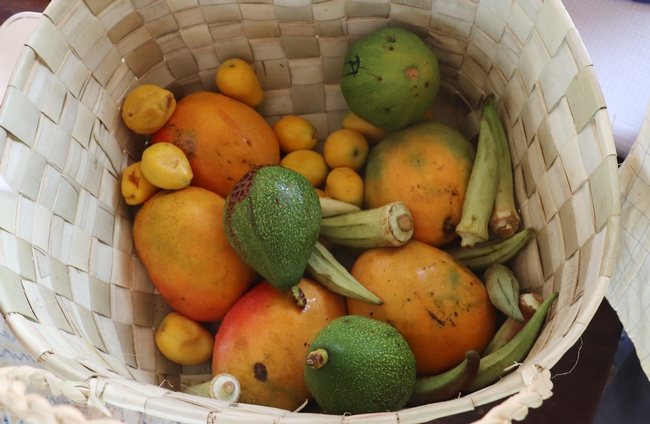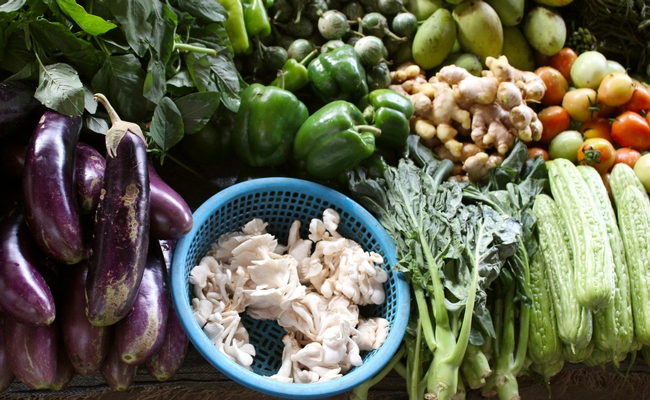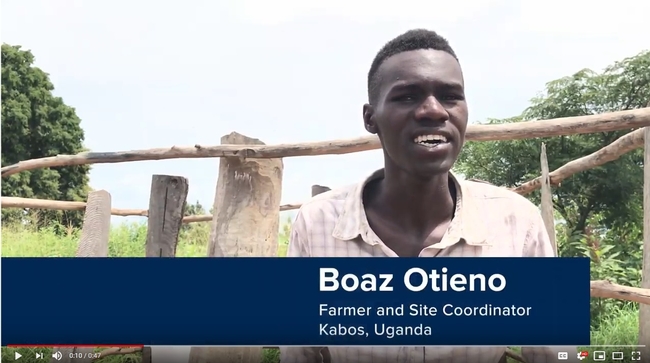Why do you love fruits and vegetables? Is it their bright colors? Their many shapes and varieties, the way they can makeover your plate with the seasons? The opportunity to taste local terroir in a very fresh bite of fruit or forkful of salad?
Is it more about the juiciness, crunchiness or succulence?
Or do you think more about nutrition? About vitamins, micronutrients and fiber, after decades of being encouraged to eat “5 A Day” to be healthy? Is it about that feeling of righteous virtue when you fill half your plate with fruits and vegetables — and know you're earning a gold star for eating right?
The importance of eating fruits and vegetables has been making headlines again recently, with studies refocusing on the concept of “nutrition security” in a changing climate and pushing for an emphasis on nutrient consumption. The EAT-Lancet commission — while mostly garnering headlines in the United States related to reduced meat consumption — also recommended a diet that would require almost every global region to increase its consumption of fruits and vegetables to meet healthy diet goals.
But there's another reason to love fruits and vegetables that might not be as obvious. Here's a 30-second video clip of what a young farmer in Uganda had to tell me about vegetables, when I had the chance to meet him last year:
“There's no quicker source of getting money in town,” Boaz Otieno explained, when discussing why he chose to farm instead of going to town to find a job. He also talked about the concept that he could grow vegetables like tomatoes on a smaller plot of land and earn as much for those tomatoes as a larger plot of corn or cassava.
"You might even grow (tomatoes) twice while the cassava is not yet harvested, so there's a lot of money in horticulture," he said.
Otieno is a farmer who was also working as a site coordinator for a research project led by Kate Scow in Uganda, which was supported by the Horticulture Innovation Lab, the USAID-funded research program that I work for at UC Davis. Elizabeth Mitcham, director of the Horticulture Innovation Lab and a UC Cooperative Extension specialist, often talks about the “double-duty impacts” of fruits and vegetables, as these crops can be a tool to achieve two major global goals: improving nutrition and reducing poverty.
And it's not just one farmer's opinion that horticultural crops can yield higher incomes. In a white paper about aligning the food system to meet fruit and vegetable dietary needs, the authors pointed out that data from Africa and Asia have shown farmer profits per hectare 3-14 times higher when growing vegetables versus growing rice. The paper also points out that USDA estimates fruits and vegetables account for 23 percent of production value in American agriculture, grown on less than 3 percent of the country's agricultural land. And here in California, fruits and vegetables are a $20 billion industry.
Later this month, the Horticulture Innovation Lab will be hosting a conference in Washington, D.C., focused on making the case for fruits and vegetables with the theme, “Colorful Harvest: From Feeding to Nourishing a Growing World.” The conference will bring together decision makers, international development practitioners, and researchers from universities across the United States, Africa, Asia and Central America to discuss how horticultural innovations can advance global issues of food security, food waste, gender empowerment, youth employment, malnutrition, and poverty reduction.
While the conference speakers and participants will be diverse, we're also working to bring farmers' voices — like Otieno's — into the conference with video clips from our partners in Nepal, Honduras, Rwanda and elsewhere, to explain what exactly it is that makes them love fruits and vegetables.
More information:
- Conference info: Colorful Harvest: From Feeding to Nourishing a Growing World
(Check the conference webpage for more videos and presentation info after the event.) - White paper: Aligning the Food System to Meet Dietary Needs: Fruits and Vegetables
- More about the Horticulture Innovation Lab
Attached Images:


